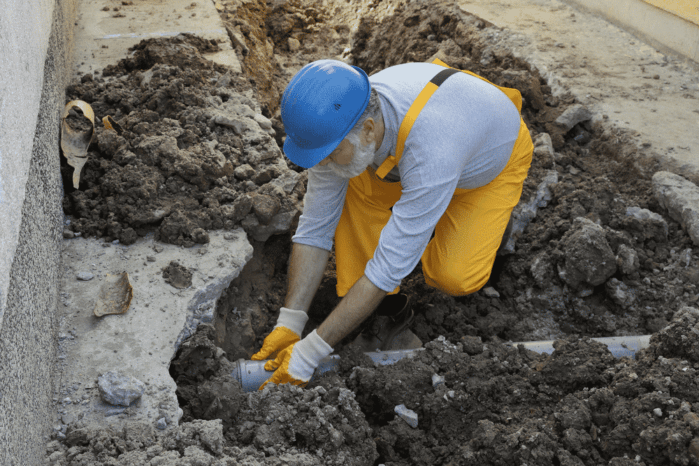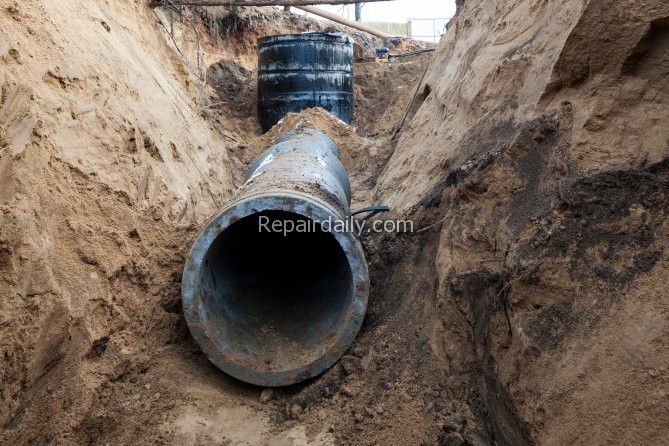

Over time, plumbing infrastructure for commercial and residential properties undergoes continuous degradation. When this happens, you’ll start to experience plumbing issues with your plumbing system. But thanks to technological advancements, cured-in-place pipe (CIPP) lining, which is a pipe rehabilitation method nowadays, allows you to repair this issue without much hassle.
While going trenchless during pipe repair, it’s essential to understand the different types of CIPP liner. Knowing this will save you from any hassle and headache in the future. Therefore, let’s jump ahead and look at the different types of CIPP liners to help you identify the perfect pick.
What’s CIPP Lining?
You need first to understand CIPP lining before you buy CIPP liner accessories. CIPP lining, also referred to as trenchless plumbing, is a type of pipe repair that doesn’t require the digging of the driveway or lawn to fix the damaged pipe below. This trenchless sewer construction method takes a much shorter time to complete than other sewer repair techniques. The CIPP lining approach is ideal for long and short-run pipes that don’t require upsizing.
The CIPP lining process usually entails adding a flexible liner to the existing pipe and inflating it. Consequently, this liner is subjected to ultraviolet light or heat to dry and later harden within the pipe. This will create a smooth surface within the pipe, restoring it to almost a new state.
The primary purpose of CIPP lining is to protect the existing pipes which have undergone damage caused by rust, cracks, leaks, and obtrusive roots. The advantage of CIPP lining is that it causes minimal destruction to your property and prolongs the pipe system’s lifespan by up to 100 years. You also enjoy peace of mind as the property owner because digging doesn’t need to be done to access the sewer system below, thereby affecting the ground
What Are The CIPP Lining Choices?
Different kinds of CIPP liners can be used during the pipe lining process, and each has its unique benefits and shortcomings. The ideal choice of lining resin should have specific properties such as extreme corrosion resistance or be used for a particular application such as in sewer lines.
Here are the types of CIPP liner options you should consider;
1. Polyethylene Resin
The first type of CIPP liner is polyethylene resin, the cheapest type of lining resin. This CIPP liner is typically used for large-scale projects done by cities or municipalities but can also be applied during residential projects. The polyester resin lining is also very strong and does an excellent job resisting damage. Because of this, it’s perfect for use in sewer systems, drain lines, laterals, storm drains, and other large-scale piping applications. Its high-quality attributes and low price make it an appealing choice for such projects.
This resin doesn’t require any pre-treatment and can be installed very quickly. The curing process is a bit faster than the other resins as well. This lining resin has carcinogenic properties and a strong odor, so it should only be used in a well-ventilated area. Because of this, it’s hard to find indoor plumbing systems that have this type of resin. The polyethylene resin is a good way of preventing corrosion and damage to the pipes but only for a short period of around five years.
2. Vinyl Resin
Vinyl resin is a hybrid of polyester and epoxy resin. It’s a great choice for lining because it contains properties of both epoxy and polyethylene, such as chemical resistance, sturdiness, and flexibility. This makes vinyl resin a strong, durable, and flexible option. For this reason, this resin is often used in corrosion-prone areas due to its high resistance to chemicals.
In addition, the vinyl resin is also less susceptible to osmotic blistering, chemical attack, and moisture absorption than polyester resin. This is possible thanks to its high bond strength, which also comes with excellent leak repair capabilities in large diameter pipes. Vinyl resins also have less shrinkage during curing than polyester resins, resulting in less stress on the pipe.
Vinyl resin is used for lining pipelines that may contain hot water or chemicals because it’s more chemically resistant and has a higher tensile strength than polyester resins. It’s also used for lining pipes carrying corrosive fluids such as sewer lines.
Another advantage of vinyl resin is that it’s less expensive than epoxy, making it an appealing pick for larger projects that demand a very large quantity of material or small projects with large budgets. Vinyl resin is also more flexible than epoxy, allowing it to handle more strain than epoxy before it breaks down or cracks.

3. Epoxy Resin
The next type of CIPP lining you should consider is the epoxy resin which works best for pipes that have been damaged by chemical corrosion or excessive buildup. It’s the most expensive resin used during CIPP lining projects for sewer line replacements or repair. The high cost of epoxy resin is because it can capably withstand high temperatures and acidic conditions.
Epoxy resin doesn’t contain any toxic chemicals and won’t shrink during curing. These pleasing attributes make it a popular choice for both residential and commercial plumbing repair projects. Epoxy Resin offers a lot more strength and can resist high heat much better than polyethylene. This is why it can cost up to 4 times more than polyethylene. It’s also corrosion resistant and can withstand heat well, making it ideal for hot water pipes such as water heaters.
This CIPP lining is mainly used in potable water applications when the original pipe can’t be determined whether it’s steel or cast iron. If a corrosion layer has developed on the pipe’s interior, CIPP epoxy can prevent further damage.
The epoxy resin cures in one hour, unlike vinyl resin which takes a couple of hours to cure. Therefore, epoxy resin can be cured and put back into service more quickly than vinyl resin. Because epoxy cures so quickly, it creates less waste than vinyl. Less waste means there’s less material left over to clean up after the job is done, which makes using epoxy easier on the environment. This quality also makes epoxy well-suited to smaller jobs that have tight timelines.
Takeaway
The traditional ways of repairing building pipes are usually destructive and shambolic, which is the last thing any property owner wants. Fortunately, the CIPP lining technique makes it unnecessary as it allows you to repair the pipe without too much hassle. If you don’t have much information about the available CIPP liner options, this guide has outlined the various options to enlighten you on this matter.
I'm so excited to tackle all my home improvement projects! From plumbing to DIY and cleaning - I'm ready to get down to work! #homerepair #homecleaning #plumbing #diy #fixerupper #realestate #renovation #interiordesign #farmhouse #diy #homedecor #hgtv #home #farmhousedecor #modernfarmhouse #farmhousestyle #fixerupperstyle #fixandflip #homerenovation #realestateinvesting #beforeandafter #homesweethome #remodel #realestateinvestor #interior #realtor #joannagaines #flippinghouses #countryliving #design #homedesign #farmhouseinspired #investmentproperty #bhghome #renovationproject #farmhousekitchen #homeimprovement #farmhouseliving #cottagestyle #decor #realestateagent #magnoliahome #homeinspo #magnoliamarket #kitchendesign #dreamhome #shiplap #construction #houseflipping #investor #farmhousedesign #architecture #farmhousechic #homereno #rusticdecor #reno #kitchenremodel #webuyhouses #magnoliatable #rentalproperty #fixerupperinspired #newhome #interiors #homeremodel
